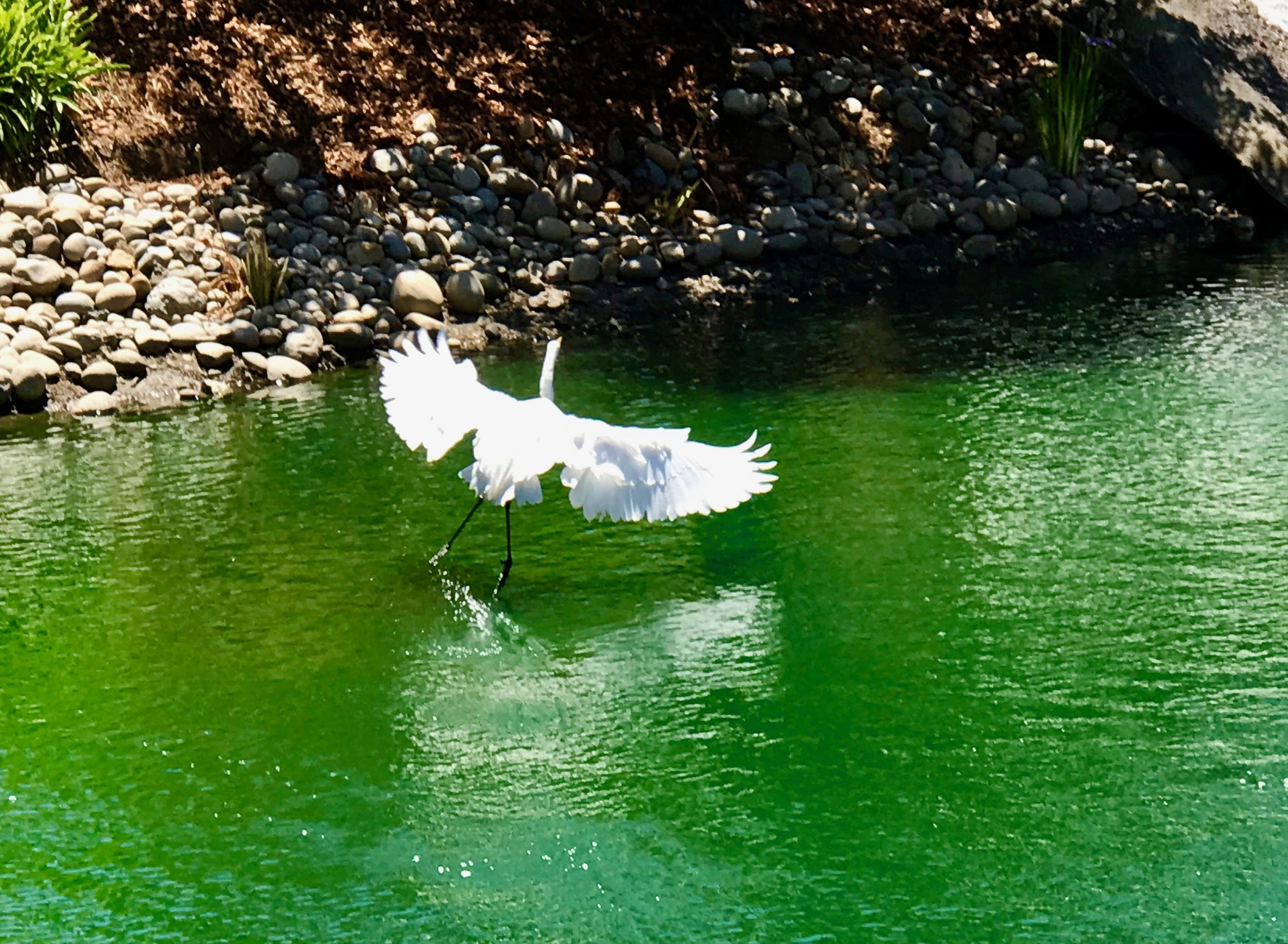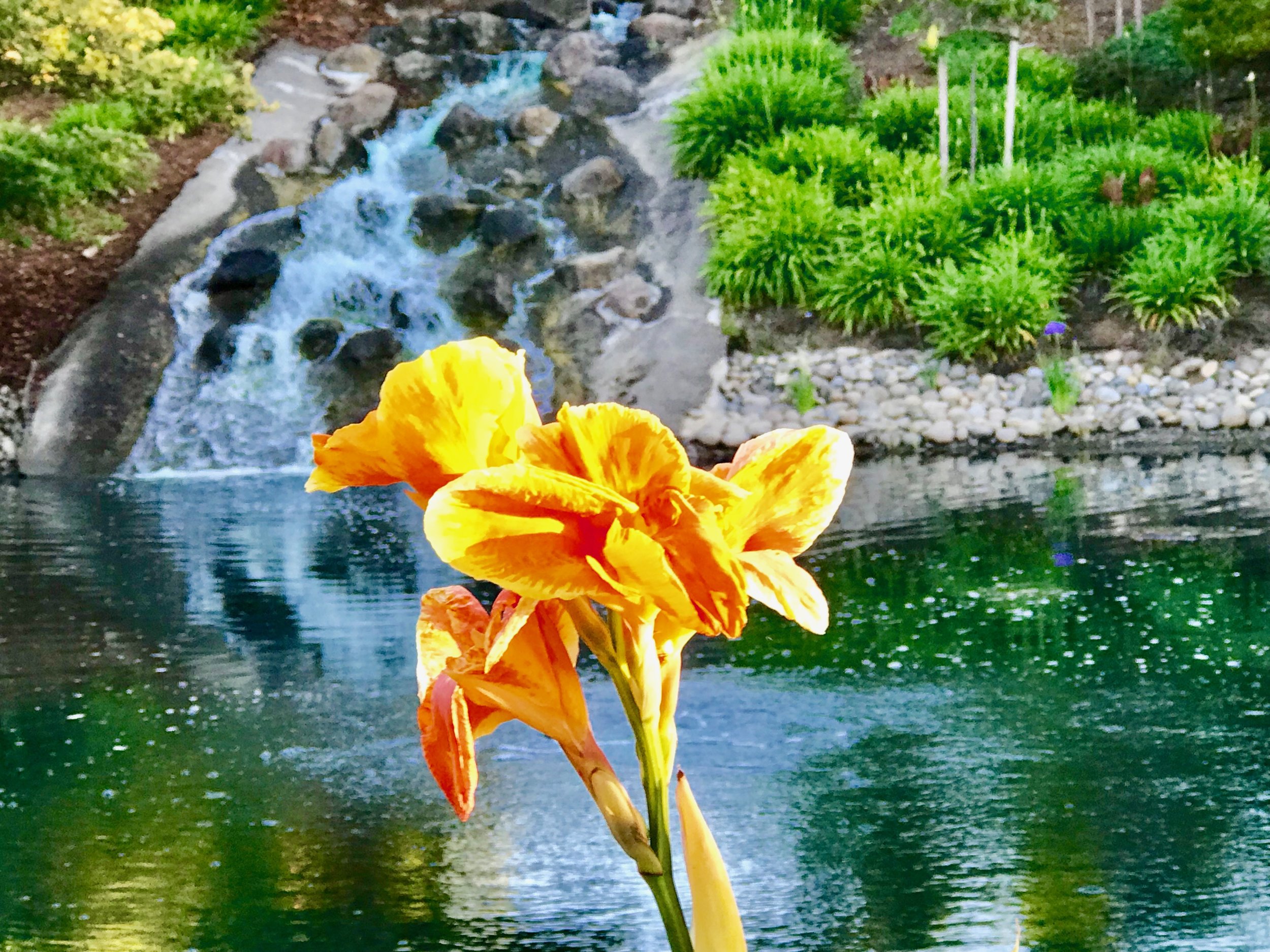“Flowers are sweet. They have short beautific lives. They offer much pleasure. There is nothing in the world that can be said against them. Sad, isn’t it, that all they can kiss is the air. Yes, yes! We are the lucky ones.” —Mary Oliver
Cecile and I passed this Royal Blue Hydarangeas on the walking trails with the blue green pond in the backdrop near our townhome. These classic flowers—first discovered in Japan—coalesce together to form a signature globe-shaped head resembling pompoms. They symbolizes heartfelt emotions, used to express gratitude to others for our being understood.
The Great Egret visits us from time to time. They boast a showy brilliant white plummage and are found around the world. I have sighted them in Asia, Canada, Africa and Australia. Locally, we have seen them at Shoreline and Vasona Lake. They have long black legs and feet, long graceful necks and straight, pointed, yellow bills.
I discovered this one wading patiently in the shallow water of the pond stalking fish. I watched it stab and grab a tiny fish into its mouth. Egrets also prey on reptiles, amphibians and small mammals. I was doing a bit of stalking myself—for that perfect photograph. I managed some nice closeups but was hoping to capture it in front of the waterfall.
Well, I got my wish. Feeling I got just a little too close, the egret took off in flight. I not only managed to get a photo of it landing, but when it reached the opposite shore it began moving toward and then in front of the waterfall. Bingo! I had my “money shot.” Now that is what I call a happy accident or was it the power of my intention in operation? When they fly, their neck draws back in to an S-shaped curve.
Their feathers are stunning. Sadly, these elegant birds were hunted to near extinction towards the 19th century.
Their feathers were used to make hats. Following conservation efforts, their numbers grew well into the 20 century. The Great Egret was chosen as the symbol of the Audubon Society, the environmental organization that was formed to protect birds.
The glorious Tropical Canna Lily has bright large yellow-orange blooms and exotic multi-colored striated foliage. They symbolize magnificent beauty, brilliance of truth and sacredness. It is native to southern Africa. Canna Lilies are also known as the tantalizing water dragon and trumpet lily, though in fact it is not even a lily. It was misnamed by a famous Swedish botanist, Carolus Linnaaeus, and was later corrected by German Koch, a German botanist.
Last but not least is the red Epiphyllum Cactus Flowers (Jungle Cactus). Epiphyllums can be found in Mexico, the Carribbean and through Central America and South America. Hybrids like this one, are commonly referred to as “Orchid Cacti” due to their luminous blossoms resembling tropical orchids. They are hardy and easy to grow. I was first introduced to the Empiphyllum by my next door neighbor, Howard who hybridizes them. He has one growing in a pot and in a long planter on our neighboring patio wall. We get to enjoy them during their short blooming period. They take your breath away.






